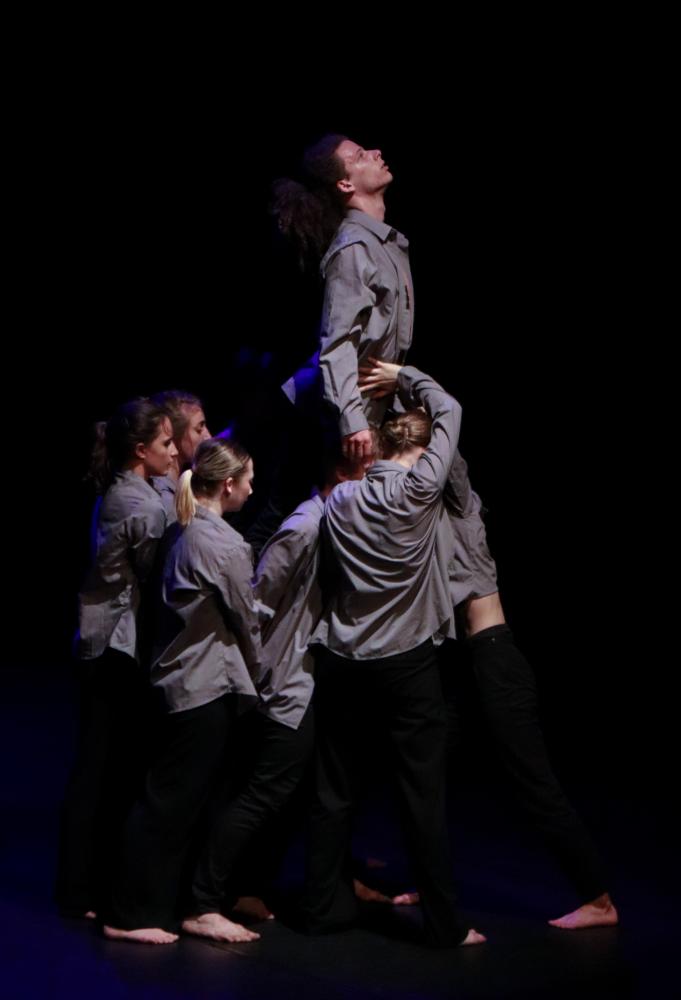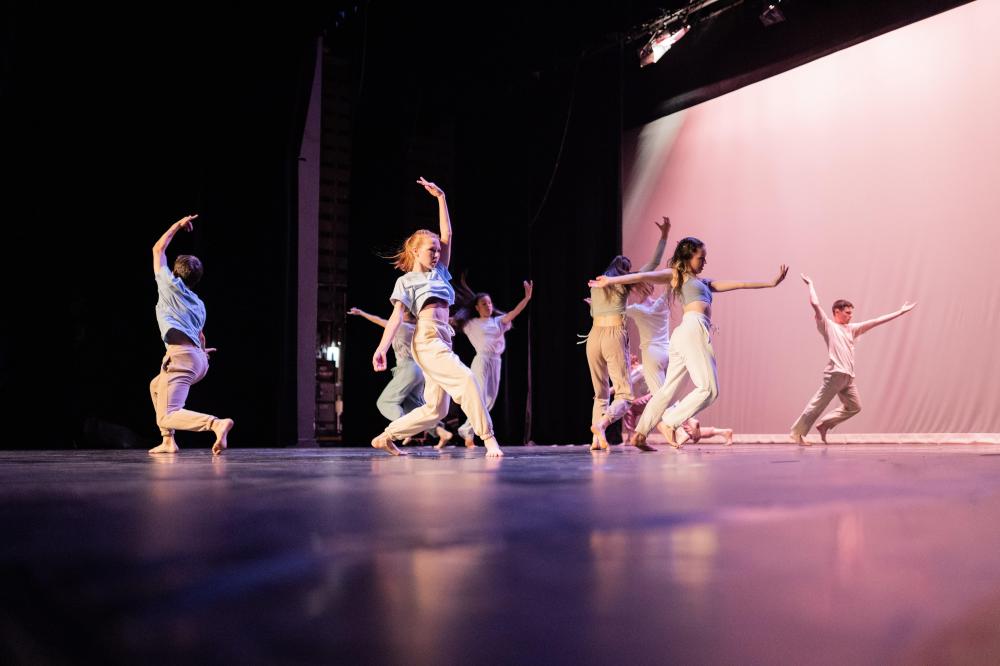INDIVIDUALS CONCERNED
Dancers and artists from an amateur and/or pre-professional practice, wishing to broaden their scenic/artistic skills and train in the performing arts as versatile performer dancers.
PREREQUISITES
The learner must be at least 16 years old and be released from the compulsory school curriculum.
He/She must have a regular practice in jazz, classical or contemporary dance and must have a technical level in dance sufficient to take intermediate level courses.
TRAINING DURATION
Duration of training in hours: 700 hours
Training dates season 2022/2023: from 03/10/22 to 02/06/23
Training times (indicative): 9 a.m. to 6 p.m. (Between 10 p.m. and 25 p.m./week)
Periods of interruption: school holidays in zone A
Place of training: Center Chorégraphique Calabash, 44 rue Pierre Delore 69008 LYON
Group size: Between 15 and 20 people
ADMISSIONS
Entry into stage training is by audition.
The group in which the learner is admitted depends on the technical level and the choreographic culture of the candidate, observed during the audition and/or during the first weeks of training.
Who is it for?
17 years and + without age limit
Different profiles
Duration
2 years minimum with 700H / year
Admission
Audition in person or remotely
ROME sheet
L1201 Dance
The little extras of Calabash
- Health and prevention follow-up with professionals
- Mental health/well-being support
- Various workshops including the dancer's course
- Public projects prevented
- Scenes
EDUCATIONAL GOALS
Stage Training ''Engagement"
● Acquisition and mastery of fundamental dance techniques
● Development of body awareness
● Development of choreographic language and various qualities of bodily expressiveness
● Structuring of body consciousness
● Research and choreographic composition
● Work on self-assessment and stress management
Stage Training ''Mastery"
● Deepening and mastering the fundamental techniques of dance
● Deepening of choreographic language and various qualities of bodily expressiveness
● Learning pieces from the repertoire
● Work in improvisation and composition
● Occasional performances and scenic practice according to the evolution of the learner
● Construction of a personal artistic project
● Artistic understanding of dance movement, qualities of intention and interpretation, in relation to time, space, energy and music
TRAINING CONTENT
TEACHING MEANS AND METHODS
2 dance studios equipped with audio equipment
1 Classroom equipped with audio and video, library and audio and video media
Dematerialization of educational resources, timetables, etc.
Documentary resources available: books, CDs, DVDs and educational resources
For theoretical courses, they can be transmitted on paper, email or video.
Material resources available to students: computer station, WIFI, printer
ÉVALUATIONS
At the start of the training, an assessment of the knowledge and technical level of the learners makes it possible to assess the initial positioning and validate the technical level. This makes it possible to detect any technical or choreographic culture gaps and to offer learners areas of work from the start of the training.
At the end of each period (December, March and May):
- Continuous assessment of learners by teachers, feedback on attendance during the period;
- Oral presentations of continuous and end-of-period evaluations with the learner
- Exam scenarios with restitution of personal and/or group variations, evaluation and feedback from the teaching team present. Learner self-assessment based on video recordings of their performance.
- Proposal for areas of progress.
The training is certified by a certificate of completion.
OUTLOOK '' Commitment ''
The stage training of the dancer performer group "engagement" allows:
- Integrate the training in the scene of the dancer performer group "mastery"
- Integrate the training to the stage of the dancer performer group "hope"
- Integrate the preparation training for the jazz and contemporary EAT.
OUTLOOK '' Mastery ''
Performer Dancer Stage Training enables:
- Integrate the choreographic research cell
- Integrate as a performer:
- Various contracted or independent companies
- Production houses
- Musicals or cabarets
- To create your own company, as a choreographer or artistic director
- As part of a double course (State Diploma of Dance Teacher), it also allows to integrate:
- Conservatories or national schools as pedagogues,
- Cultural or associative structures.


